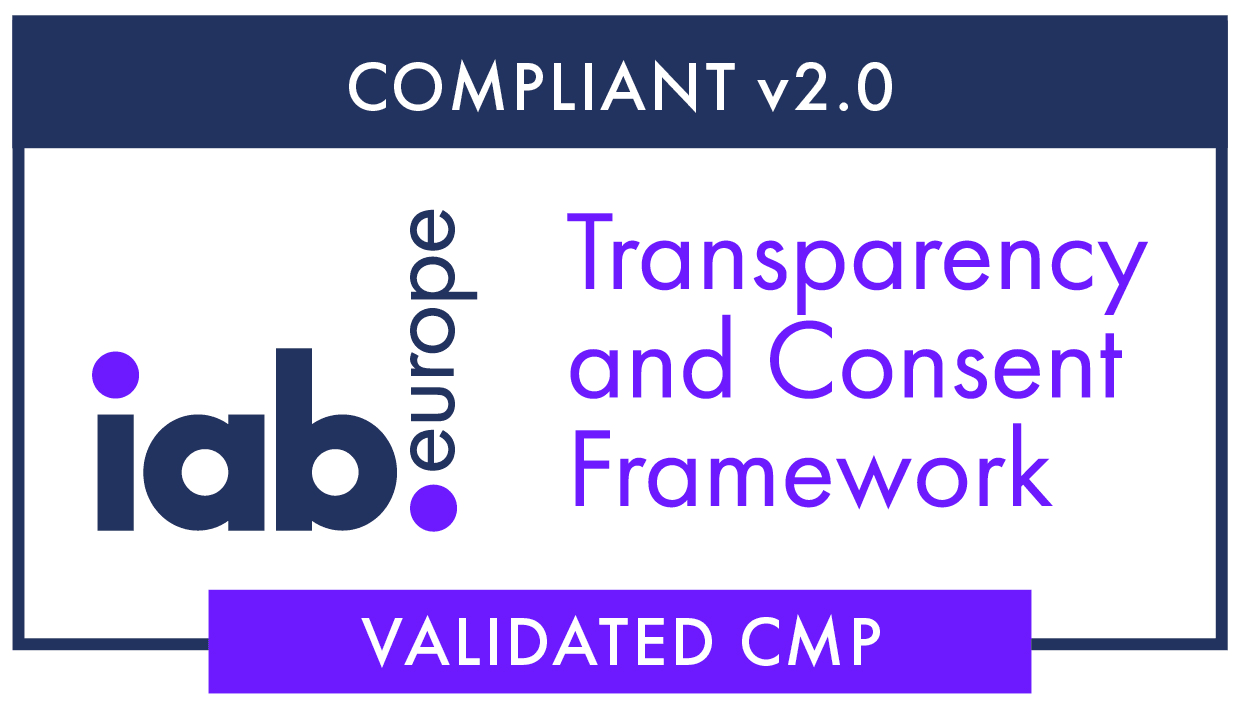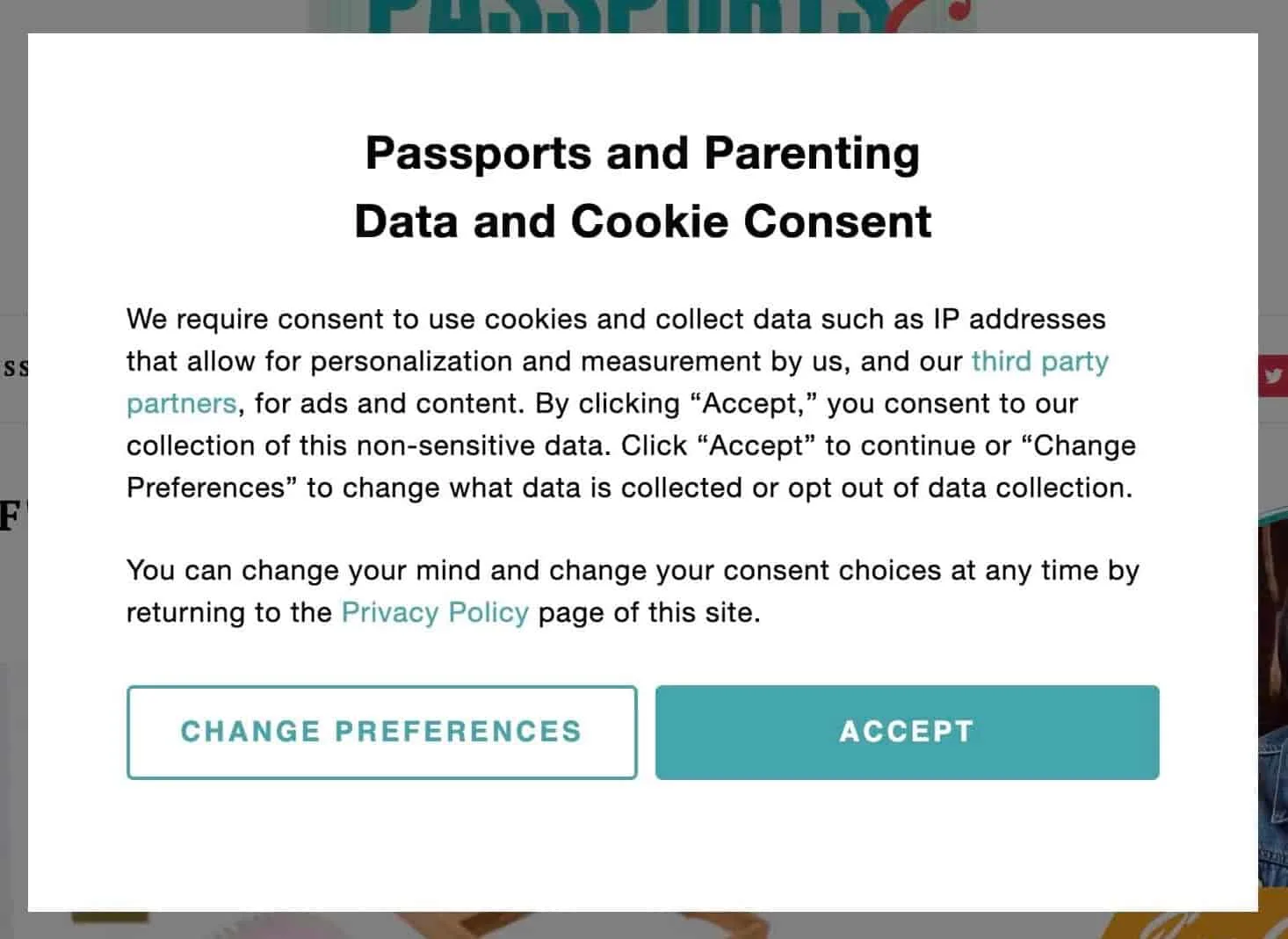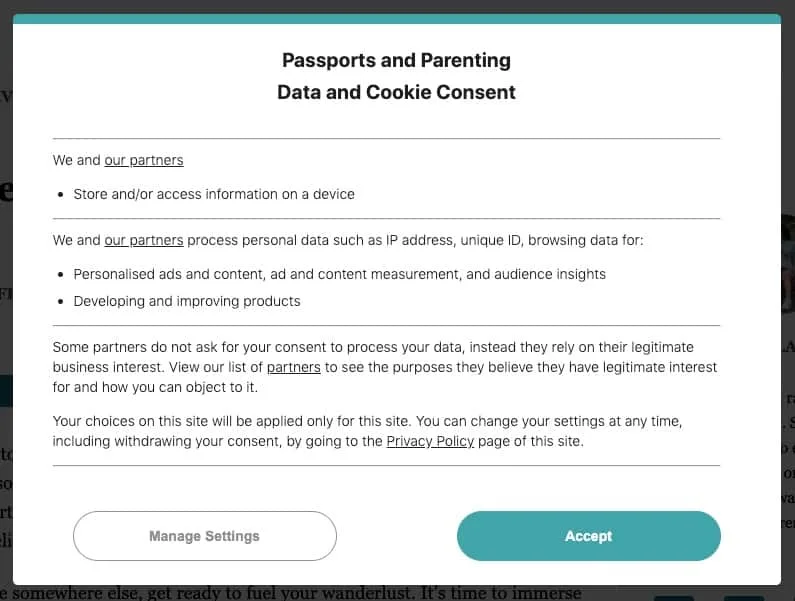TCF 2.0: Changes to Mediavine CMP


When it comes to the European Union’s General Data Protection Regulation (GDPR), Mediavine has offered publishers a free Consent Management Platform (CMP) since its implementation in 2018.
Built in-house by our engineers, the Mediavine CMP conforms to the Interactive Advertising Bureau (IAB)’s specifications, which are known as Transparency & Consent Framework (TCF).
So many acronyms, so little time.

You may not think about it much (or at all) in your daily lives, but following these TCF specifications, and being audited and approved as a CMP provider, is extremely important to publishers.
It allows Mediavine publishers to collect consent on behalf on hundreds of registered vendors within the advertising ecosystem, and then pass this consent on using industry standards.
Registered vendors range from supply side platforms, demand side platforms, agencies, advertisers, measurement tools and other data collectors throughout the online advertising world.
In a dynamic industry where privacy is increasingly paramount, collecting this consent is essential for the ecosystem to function as intended. Without it, vendors are not able to deliver much value.
In short, if you want to operate modern-day programmatic advertising in the EU and still maximize revenue, you need to be running a TCF-approved CMP, like Mediavine’s free version.
We’re telling you this because a new TCF 2.0 spec, which will mean changes to the Mediavine CMP, is here.

We’re happy to share that after months of collaboration between our engineering, operations, and legal teams, and in conjunction with the IAB, we are in the final stages of the rollout process for our new TCF 2.0 compliant framework.

TCF 2.0 required changes to the initial view of the CMP, with more – and more granular – information about the type of data being processed by our vendors, and the reason for each.
The key differences between the new TCF 2.0 spec and the old TCF 1.1 requirements:
Translation: The main difference is that the first screen is going to have different language. Then, when users go to manage preferences, there will be more of them, and they will be off by default.
You can see the following screenshots comparing 2.0 to 1.1:


This is actually a big deal; Google was not a part of TCF 1.1, requiring us to obtain consent in a roundabout way, then pass it on in a far less specific way than the TCF consent string allows.
Google wanted some big changes to the spec to become an officially registered vendor, and they got them with 2.0.
While Google won’t be fully on board until the end of their grace period (around November 15), this should only mean good things for publishers that are collecting and passing in 2.0 consent strings.
With TCF 1.1, our publishers saw a 9.3% eCPM improvement as adopters of this spec.
Additionally, we saw 93.4% more revenue earned by publishers with the Mediavine CMP than those without a CMP. Using no CMP will no longer be an option if you want to serve ads at all, but this statistic illustrates how essential consent management is in today’s world.
As one of the largest buyers – both directly through their own exchange, Google Ad Exchange, and through other exchanges with their buying platform, DV360 – Google joining 2.0 will hopefully mean similar improvements.
There is also a big, less publicized change with this. Google also controls our ad server, Ad Manager, and if Google doesn’t obtain consent for Purpose 1 (storing / accessing data on a device), they won’t allow us to serve any ads.

The Google factor does mean there will no longer be the option of serving non-personalized ads without obtaining consent.
Mediavine previously made its CMP optional and allowed publishers to opt-in to serve non-personalized ads in the EU.
With the Google change, our CMP will now be required for our publishers or ad serving will be disabled within the EU.
The good news is that there’s a reason Mediavine built its own CMP while most other ad management companies rely on third parties.
We’re able to test and optimize for consent rates, so publishers can rely on industry-leading consent rates, despite the new 2.0 requirements and the Google changes.
This means we can provide those users with our full ad experience and give our publishers full earning potential on all posts after a user consents.
As far as revenue is concerned, as we said earlier, we believe that 2.0 will mean increased earnings for Mediavine publishers in the EU, just as 1.1 did, over the long term.
Mediavine has been testing its 2.0 CMP for the past few months and more aggressively in recent weeks.
We are happy to report that performance for the new 2.0 CMP is in par with TCF 1.1 and we have rolled out the new version across all sites as of September 1, 2020.
A testament to Mediavine’s commitment to publishers – and our ability to adapt to an ever changing industry – our CMP ensures that publishers are always protected, and able to maximize revenue, no matter where a user resides.
It’s one of the many ways we stand behind our mission of helping to create sustainable businesses for content creators, and we will keep you up to date with further information on this in the coming weeks.
Stay up to date with the latest from Mediavine
Welcome to the much-anticipated release of the fifth-annual edition of “The Best eCPM Days of the Year” calendar. Each year, we analyze historical trends to provide publishers with a graphical …
“Let’s talk about politics.” We know. This is a phrase absolutely no one wants to hear uttered around the dinner table or backyard barbecue these days. But hear us out. …
Ah, July. It’s a glorious month of sand-filled swimsuits, mosquito invasions, broken air conditioners and applying sunscreen only to look like cooked lobsters. It’s also the start of a new …